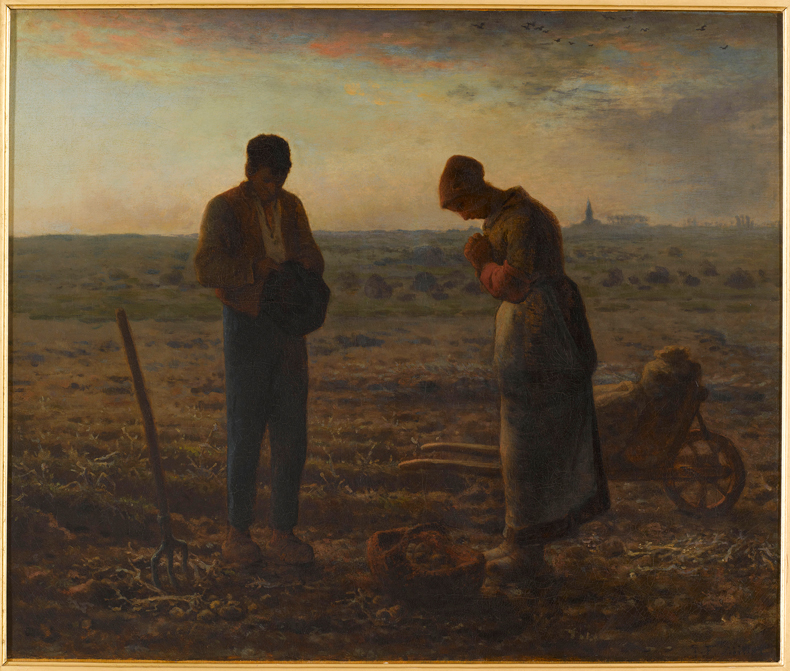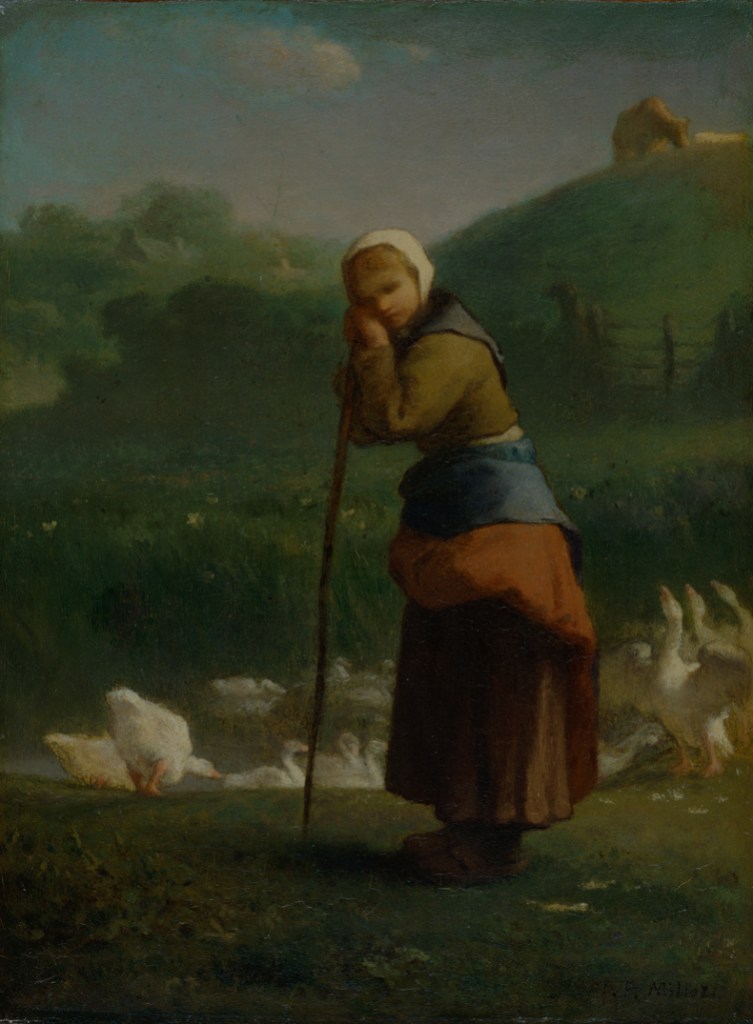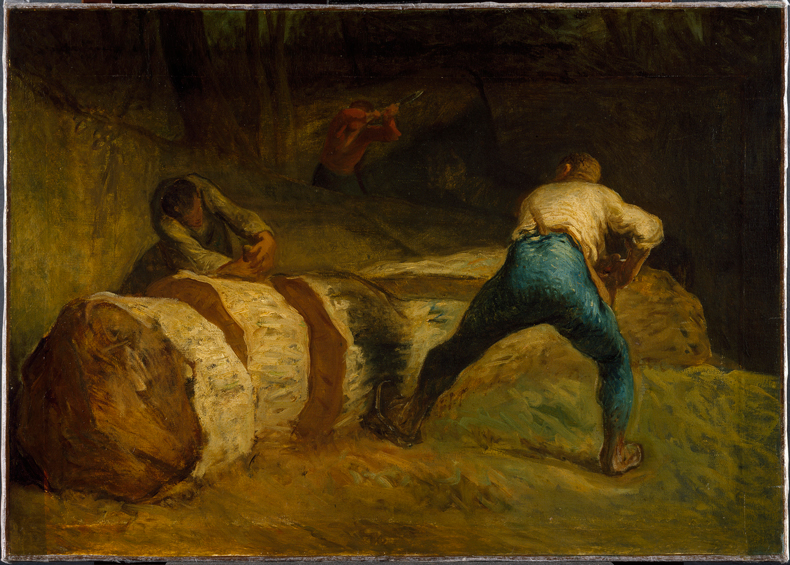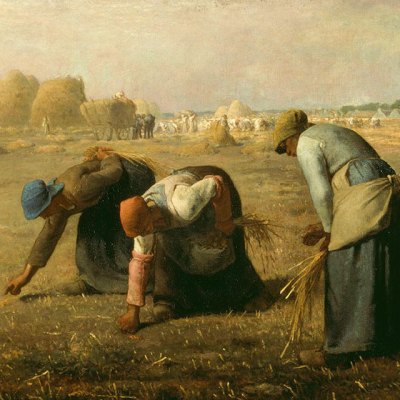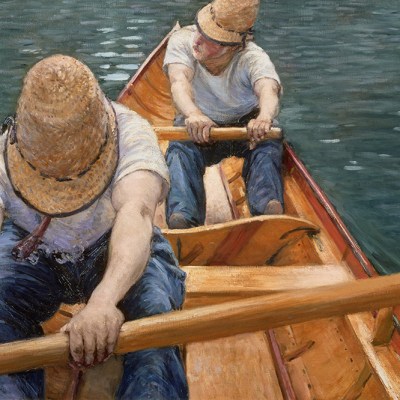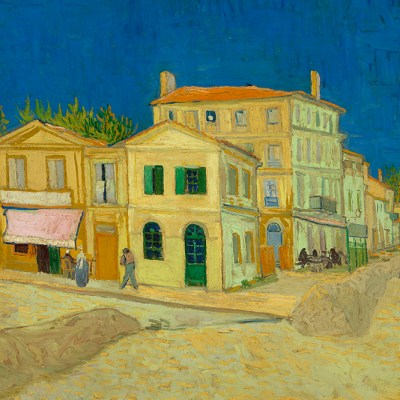The death of Jean-François Millet took place within a year of the first showing of the Impressionists, who owed much to the painter’s mastery of light and atmosphere. Best known for the works he made in Paris and Barbizon the late 1840s–50s, which imbued the toil of rural labourers with grace and dignity, Millet was revered by artists such as Camille Pissarro, whose luminous paintings of farm workers display his influence; Vincent Van Gogh, who stayed up late poring over Millet’s biography and made exact copies of his work; and Salvador Dalí, who published a book about Millet’s L’Angélus (1859) and completed his own homage to the painting in 1933. On loan from the Musée d’Orsay, L’Angélus, a tender depiction of a man and a woman praying at the end of a day spent harvesting potatoes, is the centrepiece of this exhibition at the National Gallery, which marks the 150th anniversary of Millet’s death (7 August–19 October).
Find out more from the National Gallery’s website.
Preview below | View Apollo’s Art Diary
